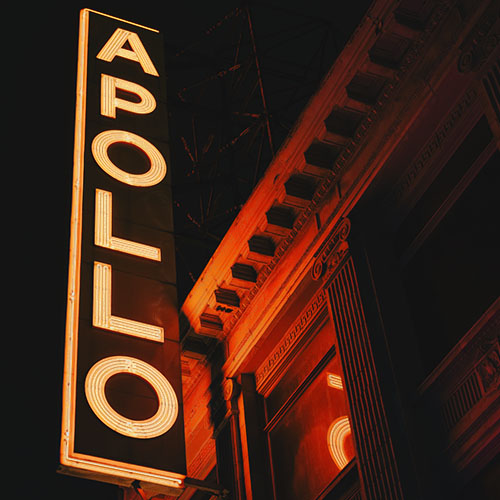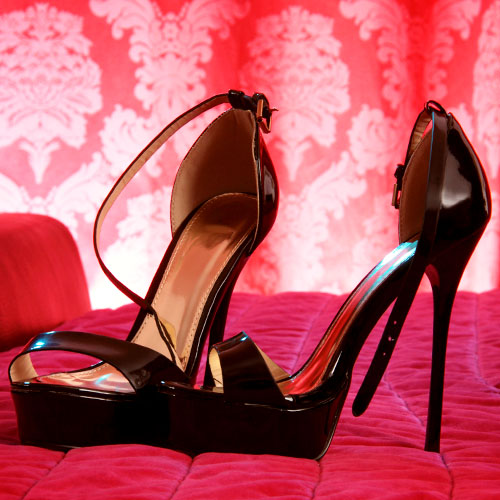Harley-Davidson is 90 Years old. Its bikes remain one of the very few things designed and manufactured in America that are still recognized and respected all over the world.
Harley-Davidson: In Hog We Trust
So what’s it all about?
Let me begin with a story. For many years, before I saw the light, I rode a foreign bike. Now, as you may know, motorcyclists — who like the self-image of being the “Knights of the Road” — usually salute one another with a quick wave of the left hand when they pass on the road. For years it galled me mildly that Harley-Davidson riders never waved back at me, obviously because, so far as they were concerned, a man on a different bike was invisible — or possibly beneath contempt. I got the message, though I didn’t like it.
Then I finally took the plunge. I was on my way home with my new Harley (struggling with the strange feeling that all the controls were designed to require maximum physical strength, like a weight-lifting machine) when I saw a rider approaching me from the opposite direction, a bearded giant in a sheepskin vest that looked as if it had just been torn from a living sheep, grimy jeans, a Nazi helmet, and studded gauntlets over hairy, tattooed forearms — on a Harley, of course.
I raised my hand in a tentative salute and, lo and behold, he waved back! He not only waved back, baring his teeth in a snarl that seemed intended to be a smile, but he nodded at my brand-new Harley and growled, “Fucking-A, man,” giving me a thumbs-up. I was so happy I nearly fell off my bike!
If the fact that the Harley-Davidson company is 90 years old doesn’t strike you as awesome — or at least interesting — you probably shouldn’t read any further. On the other hand, a man who isn’t interested in Harleys has probably stopped looking at pretty girls on the street or in this magazine.
The Harley-Davidson motorcycle, of course, is not just a machine — it is the machine, one of the very few things designed and manufactured in America that is still recognized and respected all over the world, at once a cult object and a part of that amorphous entity, the American dream.
Other American manufacturers have “Europeanized” themselves to survive. Our cars, which once had a distinctive look — think of the early Corvettes, the first Thunderbird, Cadillacs in the tailfin era, the Chrysler 300 — are now rounded clones of small foreign sedans. But Harley-Davidson rides on, beyond good taste or bad, defiantly clinging to the old-fashioned American desire for chrome, proudly resistant to the very idea of streamlining, as well as to plastics in any form. In an age when so many bikes are designed by computer and tested in wind tunnels, as if they were airplanes (some of them are almost as fast), Harleys still have the aerodynamics of a brick shithouse and thump along with a humongous, primitive, pushrod V-2 that was antiquated before World War II, or possibly even World War I.
An example: The major product news from the Harley-Davidson research-and-development department for 1993 is the new Heritage Softail Nostalgia model, which will sport — get this — white sidewall tires, natural black-and-white cowhide seat inserts, and 3D-look cloisonne tank badges (“a first for Harley-Davidson,” the company claims proudly). The headline above the release reads, “New 1993 model recalls the past.”
If this strikes you as taking retro chic to extremes, it might be worth bearing in mind that Harley dealers have always had more customers than bikes, resulting in the fact that used Harleys are usually worth more than what the owners paid for them. As for discounts — don’t ask! You’re lucky if you can find a new Harley.
This is an enviable position shared only, to my knowledge, by Ferrari dealers, whose product line is equally old-fashioned — no fancy electronics, a big engine, and a cult following roughly equal to that surrounding the Shroud of Turin.
The Harley cult has grown so large that by now it extends to people who have never even ridden a motorcycle, nor do they intend to. This is because Harleys have come to represent a lifestyle, real and imaginary, that includes all sorts of attitudes that have very little to do with bikes, not the least of which is a certain prickly and unapologetic nationalism, perhaps typified by the fact that the Harley I own, the 1990 Fat Boy, is named after the atomic bomb that was dropped on Hiroshima. It is hard to imagine the Japanese naming a motorcycle the Pearl Harbor, or the Germans selling a car called the Blitzkrieg, but Harleys are marketed with a curious blend of provincialism and astuteness, as if the company and its core customers understand one another perfectly.
This rare harmony between a company and its customers is deceptive, however. There is a certain uneasy ambivalence about the Harley culture, a schism typified by the fact that while Harley-Davidson cautions its riders to wear a helmet, a substantial number of its customers are protesting vigorously against state helmet laws. It’s as if Harley-Davidson suffers from a split personality, which, as it happens, is indeed the case. As an example, a recent Harley ad reads, “We’ve survived four wars, a depression, a few recessions, 16 U.S. presidents, foreign and domestic competition, racetrack competition, and one Marlon Brando movie….”

At the Harley-Davidson Plant
It is the heart of heavy metal — the huge, six-story redbrick block that Is Harley-Davidson’s headquarters in downtown Milwaukee. Not the kind or building that would normally induce awe, but even the toughest biker’s heart beats raster when he sees It.
Harley has been on this site ever since Its four founders moved out or their shed In the Davidsons’ backyard in 1908. They used to make the bikes right here, starting at the top, on the sixth floor, then down, floor by floor, on conveyer belts until the finished bikes rolled out onto the street.
No sign of all that now. Today the sixth floor is the domain or William G. Davidson, known to one and all as Wille G., grandson of one of the co-founders and the company’s design guru since the seventies.
The elevator door opens onto dove-gray carpeting, whitewashed brick walls, and oak finishings. The place looks more like an architect’s office suite than the heart or the biggest, baddest bikes in the world. And when Willie G. appears, he seems shorter than a legend should be, his beard gray and more carefully shaped. He’s affably soft-spoken, like everyone here at headquarters, where the garb of choice is not leather and black T-shirts but pink rolled-sleeve shirts and flowered ties. “We’re artists as well as engineers,” he says, perhaps by way of explanation, as we settle down shoulder to shoulder at a big conference table to study the catalog — deeply textured photographs of new bikes placed side by side with old ones, all artfully photographed in old-master colors, light and shadow playing over them so they gleam against the canvas backdrop.
Willie wears heavy silver rings cast in the form of cylinder fins, and they flash In the sunlight as his hands move over the photos, pointing out the details — the clean back wheel of the Softail, with the hydraulic shocks under the transmission to keep the unfettered look of the old hardtail; the molded oil tank wrapped around the battery; the precision etching of the V-twin emblem and the Harley logo on the carburetor air cleaner and clutch hump; the play of polished chrome against burnished aluminum.
“Gearheads are basically creative inventors who think about hardware in a certain way,” he says. “They’re people who can focus on something as seemingly small as fastener head design and appreciate the subtleties. That’s why the engines are exposed — the visuals of the Harley power plant make it an art form in itself.”
I hadn’t expected all this talk of art — it’s heady stuff. So though it’s fun to sit with a legend, it’s almost a relief to move on to stop No. 2 on my tour of Harley — the engine and transmission plant in the Milwaukee suburb or Wauwatosa. It’s like walking into the mess of a sculptor’s studio after seeing the polished piece in the anesthetic perfection of an art gallery. Here In Wauwatosa is the sweat and the effort, the noise and the dirt, the process by which raw metal is converted into gleaming machine.
Built by the U.S. government as an airplane assembly plant during World War II — the military connection continues with a special area cordoned off to make bomb casings — it’s old-fashioned heavy industry, with its own huge forge shop. I’m so used to auto assembly plants, where all the engine parts are contracted out to be made elsewhere and then merely assembled on site, that I’d all but forgotten this way of doing things. Harley makes all Its own parts — forging them, tooling them, polishing them with ground walnut shells. No pink shirts or flowered ties here on the shop floor. This is where the men who work with metal have that traditional Harley look — long beards, black T-shirts, bulging, tattoo-covered biceps — amid the din of pressing and stamping and grinding, the odor of grease and fire, the true guts of the machine.
Computers have made their mark, even here — new tooling machines, new quality-testing machines, new robots hissing sparks, arcing and flexing like mechanized swans. Yet it’s gratifying to see how much of the work is still done carefully and thoughtfully by hand. On the transmission assembly line, there’s an ongoing chess game, the board placed a few feet away from the line, with moves to be pondered throughout the shift. At the end or the line, stacks or engines and transmissions wait to be loaded onto the orange-and-black Harley trucks and driven down to York, Pennsylvania, site or the final assembly plant. I follow the trucks. Milwaukee may be the heart, but York Is the true mecca of Hog owners. This is where the finished bikes roll off the line, and ifs the home of the Rodney C. Gott Harley-Davidson Museum.
Karl Fetterman, a retired Methodist minister who works here as a guide, has been designated to show me around.
“If you have a Harley,” he says, “you’ve got to come here to York. It’s like a Muslim has to go to Mecca. There was one time I was showing a group of people around the museum, and one guy kept shushing me. ‘Don’t you see?’ he said. ‘This is a shrine here.’”
Clearly, we could get into a long discussion of biker theology, but by now we’re inside the museum. And here, bike by bike, I realize I’m walking through the history of America’s twentieth century. There’s a scale model of the earliest bike, one of the three made in 1903 in that backyard shed in Milwaukee. It’s a Tiffany confection, made out of silver, gold, and diamonds for Harley-Davidson’s 75th anniversary. One of the originals is on display in the lobby of the headquarters in Milwaukee. The second is in the Smithsonian. And the third? Nobody knows.
It’s the case of the missing Harley. Long rusted away on a junk heap, probably, but at Harley there’s a conviction that it’s still out there somewhere, like a diamond buried deep underground waiting to be discovered, dug up, polished, and revered.
The earliest prototype is long lost, too, but Karl describes it vividly: “It had spark plugs the size of doorknobs and a carburetor made from a Campbell’s tomato-soup can. That artist fellow Warhol would’ve liked that.” Bill Harley’s first 45-degree V-twin (built in 1909) is here, however, along with one of the early Silent Gray Fellows, which came in any color you wanted, so long as it was gray. So is one of the first military bikes, which were used for scouting and dispatch and sent into action in border skirmishes against the Mexican revolutionary Pancho Villa in 1916, then sent (20,000 of them) overseas in 1917 and 1918 to World War I.
A World War II bike is here, in standard olive drab; 90,000 of them were shipped to the front from 1942 to 1945, with the plant working day and night in an award-winning war effort. Walk on and you can trace the evolution of the Harley power plant from knucklehead to panhead to shovelhead to the 80-cubic-inch Evolution engine, introduced in 1984. The latest addition to the museum collection is the ultimate luxo-bike — the new Ultra Classic Electra-Glide, with built-in CB radio, intercom, voice-actuated radio squelch, special helmets, cruise control, and four-speaker sound system.
Then there are the photos, best of all those of the original Harley “wrecking crews,” the factory-backed racers who dominated the bike circuit from the teens on. That’s when the word hog probably originated, with Red Park-hurst’s pet pig, which traveled to meets with him and rode on the gas tank in front of him during victory laps. After a while the competitors began to say, “Here come the hogs.”
I’d checked this story with Willie G. earlier. “There’s as many stories as to where the name came from as there are tellers,” he said, “but that’s as good a one as you’re likely to hear.”
As we move on to the assembly lines, Karl rattles off the statistics — 26 different models this year, with 34 different types of tires, including the whitewall tires on the new limited-edition Heritage Softail Nostalgia (which is the bike I’ve been yearning for ever since Willie G.’s hands lovingly traced its lines for me). The perfect gangster bike.
“The Harley-Davidson manufacturing plant looks more like an architect’s office suite than the heart of the biggest, baddest bikes in the world.”
The “big-bike” line is still run the traditional way, with the bikes on a conveyer and each worker responsible for one specific task. But the newly separate Sportster XLH line next door is smaller and more quiet. You can even hear the music playing. Three-person teams — about one-third women — move along the line, putting the whole machine together from frame to finished product. It takes them about an hour for each bike. On the big-bike line, it takes two and a half hours. Harley’s next step is to revamp the big line, too — not only does everyone prefer working in the team system, but production is far higher.
Every bike going by on the line is different — color, model, specs, options. Some are marked for foreign delivery 3 Japan, Switzerland, Britain, Australia. Just-in-time manufacturing of parts — the right part automatically at hand — combines with a sophisticated computer system so that each bike is customized. You want a fishtail exhaust, a shotgun exhaust, buckhorn handlebars, ape hangers? The computer will fulfill your wildest dreams, right there on the line. And if you decide to buy a Harley on the ride-away system, you can go to York on the day your bike is scheduled to be made, watch it being assembled, then get right on it and take the long way home.
But not before it’s been tested. At the end of the assembly line, every bike goes into the testing cubicle, where the tester attaches a fuel feed (bypassing the tank), mounts it, and takes it all the way up to the redline as red digits flash in a computerized readout above him — 65, 75, 80, 85, 95, 100 miles per hour. He tests the brakes and the electrical systems, then renders his verdict: The bike goes either to the left, to be crated for delivery, or to the right, to be checked for one questionable detail or another. On the Sportster line, the assembly team watches. It’s a matter of pride that the bike go to the left.
At this point there’s nothing left for me to do but ride. Karl takes me over to the quality audit department, where they test about two percent of all bikes made using a twisting, corkscrewing, one-mile-long pavement track that’s laid out on a sloping hillside above the plant.
I’ll ride with one of the testers, Mike Kemper, who has what I’m starting to think of as the Softail look — the hardtail appearance but a softer feel. Like Willie G.’s, his beard is neatly trimmed. The tattoos on his arms are faded from time. I gear up and we set off on a Low Rider Custom, picking up speed with each lap as the engine warms up until we’re swooping into the corners at 70, twice as fast as any car would dare on such a tight track.
Mike is a happy man, and even better, he knows it. “We ride here every day, except when there’s ice,” he says. “I’ve worked with Harleys all my life — 18 years in dealerships — but this job beats the lot. Not only do I get paid to ride Harleys, but I also test the prototypes, the bikes that are four or five years into the future.” He looks up into the sunlight glancing off the track. “I tell you, this has to be the greatest job in the world.”
Those of us who remember the last Presidential Administration in America may well remember how the “America First” political tag line became basically “America WTF?” in world economic terms. In Harley-Davidson micro-economic impact, this created a shift in the vintage American brand which began humbly in Milwaukee, Wisconsin. Ironically, an April Fools’ joke from back in 2014 claiming Japan’s Kawasaki had purchased the Harley brand may at some point turn out to be true. For now, we’ll just look back on the most awesome places to get your bike modified to your most niche whim. Who needs online RPGs when you can drive your fantasy down the road?

























